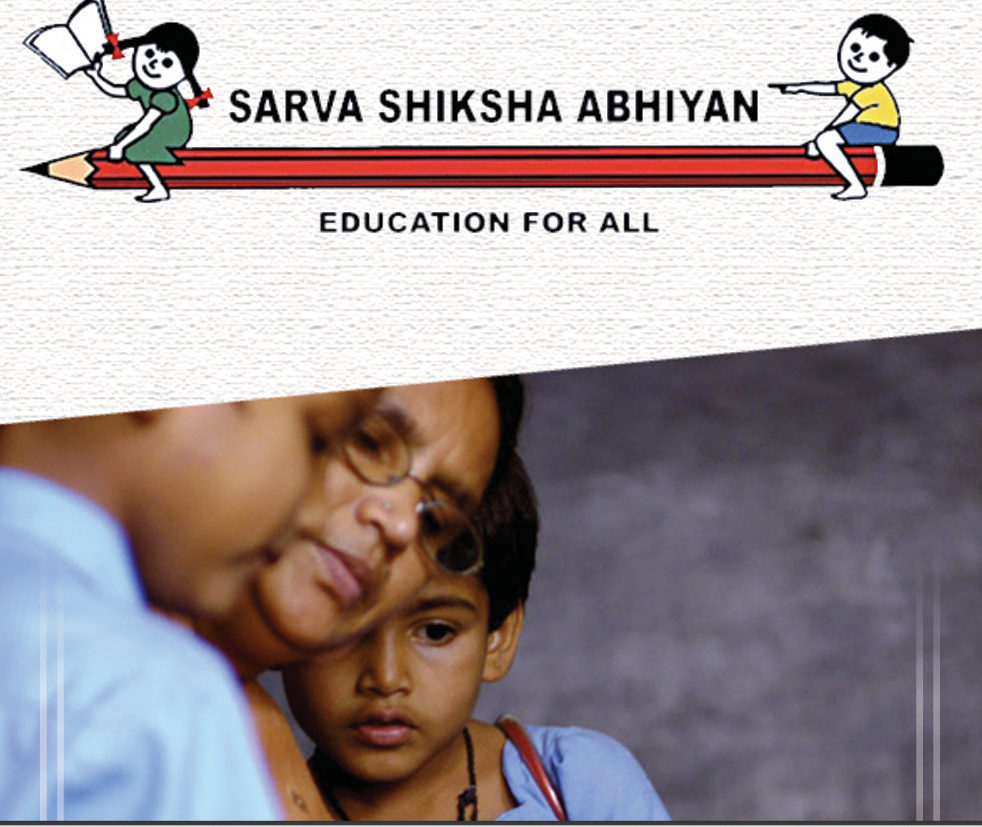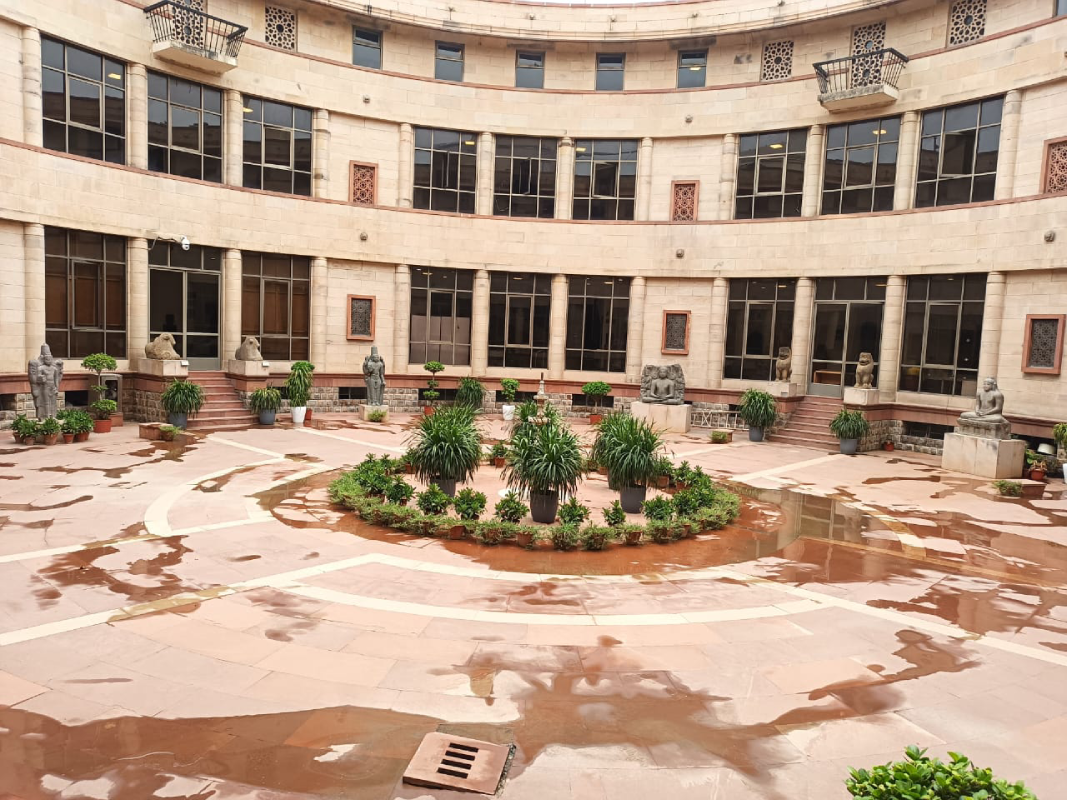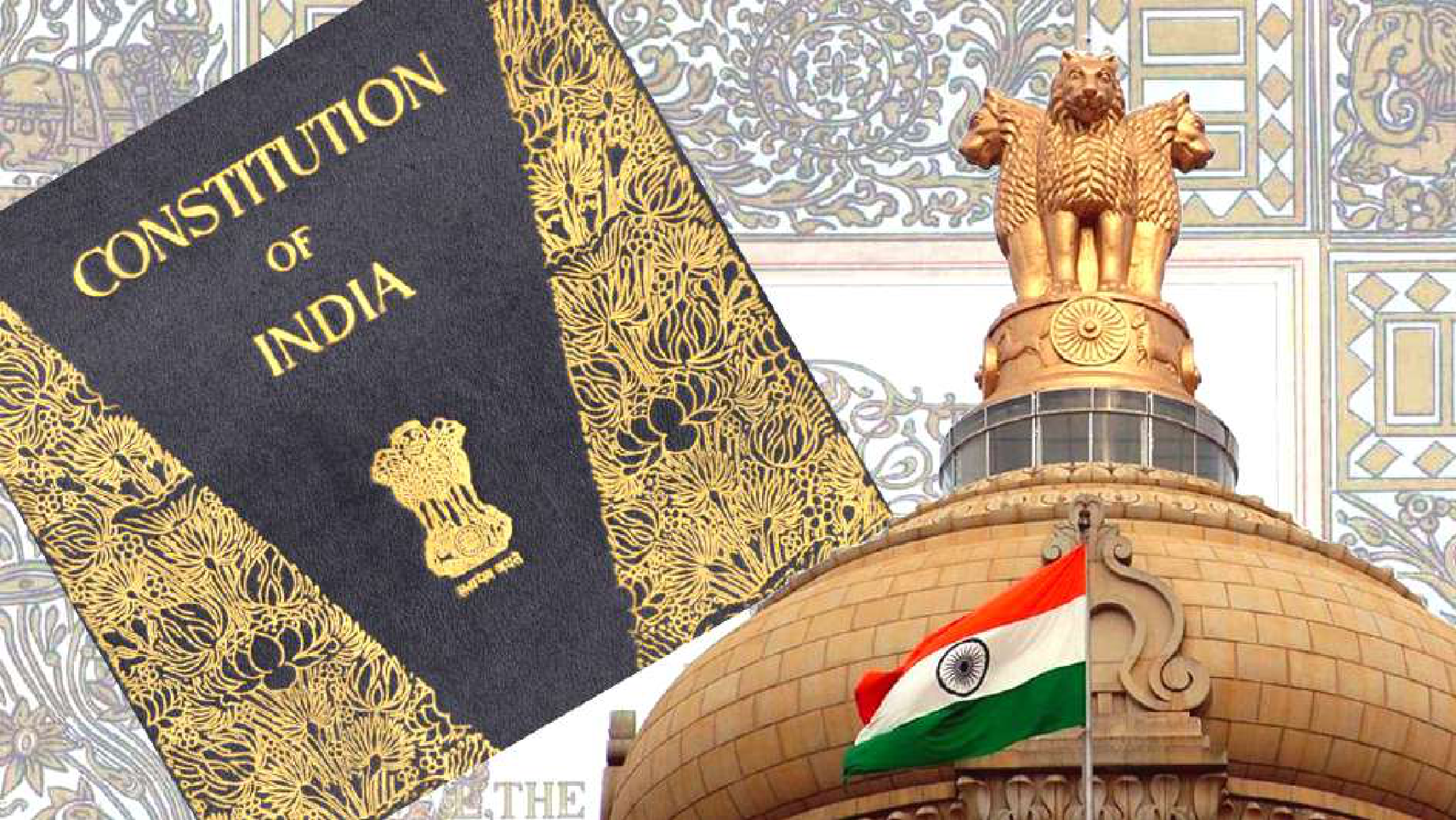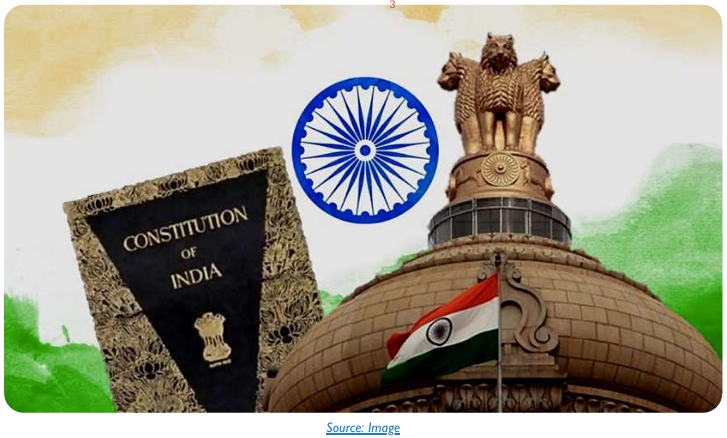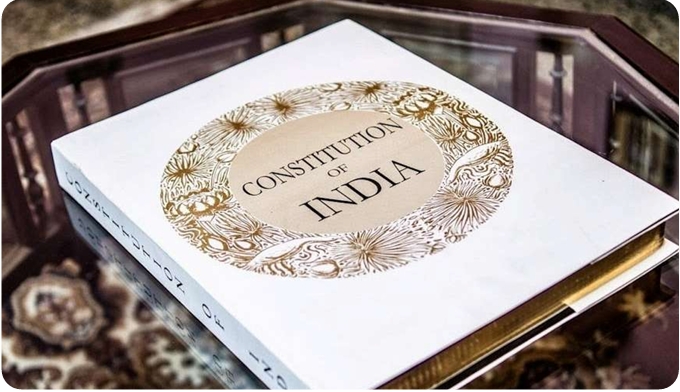Background
In India the demand for a right to education has been there since before independence. At the time of the constitutional assembly debates, education was first considered to be part of the fundamental rights105 . However, due to financial considerations it was dropped from the list; it was then introduced as part of the directive principles under Article 45 which stated “The State shall endeavour to provide… free and compulsory education for all children until they complete the age of fourteen years”. But, due to the recommendatory nature of the directive principles, primary education lacked attention and even after decades very little progress was made. The 1991 Census highlighted that even after 40 years of independence 61% of women and 36% of men above age 7 were not able to read or write106 .
The right to education received special impetus in the country after India ratified the UN Convention on the Rights of the Child (UNCRC) in 1992107 . Shortly after the ratification, the Supreme Court of India, in a 1992 judgement in Mohini Jain v. Union of India108, recognised education as a part of the right to life, and therefore a fundamental right. However, due to inertia and lack of political will, it took 10 years for this to be reflected in the Constitution109 . Finally in 2002,Article 21-A was inserted into the constitution through the 86th amendment, making education a fundamental right of all children between 6-14 years. The supporting legislation for this right which listed out the terms, took another eight years to come into effect.
The Right of Children to free and Compulsory Education (RTE) Act was finally enacted on 4th August 2009 to fulfill the mandate of Article 21-A of the Constitution.The Act describes the modalities of providing free and compulsory education to all children between 6-14 years. It makes it legally binding on the state to ensure that all children within the age group are admitted to a formal school of a certain standard. Many consider the RTE historical as it carries with it the hopes and aspirations of millions who were previously excluded due to class, caste and patriarchy. However, even as the 10 year anniversary of this landmark Act has passed, its implementation continues to be a huge challenge.
Key Issues
- Low Enrolment of STs and Muslims:The RTE has helped increase the total enrolment in absolute terms especially at the upper primary level.The figure has increased by 23.86%, from 5,33,50,189 in 2008-09 to 6,54,48,222 in 2017-18 as per DISE data110 . However, the enrolment of STs and Muslims remains low. The 2017-18 data shows the enrolment of muslims at 14.7% and STs at 10.7% of the total enrolment.
- Discrepancy in Data on Out of School Children: There is lack of availability of updated data and within the available data there are huge discrepancies111 . Contradictions in the data provide by the Census 2011 and MHRD. Even state level data suffers from variation. For instance, in Karnataka the PAB minutes note a decrease of 1 lakh children, however, as per the data provided by the state the fig. is 21,816.
- High Drop-Out and Low Transition for Girls at Upper Primary Level: As per the latest DISE data112 , in 2017-18 the drop-out rate for girls at the upper primary level was at 5.57%, which was much higher than boys at 4.49%. The transition rate from upper primary to secondary for girls was at 87.54% as compared to 90.84% for boys. This points to a gender divide at the upper primary level.
- Poor Learning Outcomes: The learning outcome of students is taken from the ASER 2018 report113 . The percentage of children in class 3 who can read class 2 level texts has increased from 25.1% in 2016 to 27.2% in 2018. At class 5 the proportion has increased from 47.9% to 50. 3% and at class 8 level the figure has remained constant at 73% between 2016 and 2018. In basic arithmetic skills, the students of class 3 who could do basic subtraction has increased marginally from 27.6% to 28.1%, and class 5 students who could do basic division has increased from 26% to 27.8% during the period. While, the figures do reveal a slight improvement, they continue to indicate very poor learning outcomes across levels. This is one of the most important concerns as attending school becomes meaningless if appropriate learning is not happening.
- Low Compliance with RTE Infrastructure Norms: The numbers on most counts such as building, drinking water, toilets etc. are above 95% and remain consistent with the previous year114 . However, the figures for boundary wall, playground, kitchen shed and ramp remain low at around 60%. It is also important to note that while the individual figures above seem high, this conceals the fact that when aggregated, the numbers change For eg. while more than 95% have drinking water and separate toilets for both boys and girls, all WASH facilities when taken together are present in only 53.85% of the schools. Also, as per the CAG 2017 report115 the aggregate figures for states remain extremely low.The report highlights that at national level the full compliance stood at 8% in 2016, and 20 out of 34 states had compliance below 8%.
- Inconsistencies in DISE Data: Since the DISE data is self reported by schools its accuracy is questionable. The CAG 2017 report116 has noticed many inconsistencies in the DISE figures,
- Huge Vacancy of Teachers under SSA: The RTE at the time of implementation allowed 3 years for the recruitment of teachers and 5 years to complete their training. However, the current data117 highlights a continual shortage under SSA. As per the Lok Sabha Question 2018, while the recruitment of 19,33,398 teachers were sanctioned, there is a vacancy of 4,17,057 teachers, which is more than 21%. There are also shortages of teachers for CWSN.
- Critically Low Figures of Trained Teachers: The 2017-18 DISE data118 shows that at the ‘primary with upper primary’ category only about 33% of teachers are trained. Owing to a lack of progress, the 2017 amendment increased the time for training of teachers till 2019. At the time the HRD Minister Prakash Javadekar had said that there were around 7 lakh teachers that lacked basic qualification and the amendment was to allow these teachers complete B.Ed. and other professional degress.
- Non Academic Duties Given to Teachers: The RTE prohibits the use of teachers for activities other than teaching. A 2008 SC order119 also prohibits using teachers for non academic duties, however, as per many media reports this practice continues.
- Implementation of 12(1)(c) Below Stipulated Norm with Huge Variation in States: Section 12(1)(c) allows for 25% reservation for economically weaker sections (EWS) and disadvantaged groups (DG) in private unaided schools. It has been estimated that around 16 million children should be getting admission under this provision120 . However, due to resistance and many implementation hurdles, enrolment remains below the stipulated figure. There are also huge variations across states. A 2017 paper121 observed that the enrolment rate in 2013-14 in UP was only 3.62 percent and in AP it was an appalling 0.21 percent of the total stipulated seats under this provision, as compared to MP which had 88.2% filled seats The RTE Forum has also noted that only 15 out of the 36 states and UTs have asked for central government funds to implement this provision.
- Huge Delays in Completing Admission Process under Quota:The application forms for 12(1)(c) are complex with many parents finding it difficult to complete the application122 . There are also shortages in help desks123 . Consequently, there are huge delays in the entire admission In MP last year more than 44,000 students got delayed in admission124 .
- Discrepancy in Per Child Cost and Delays in Reimbursement: 12(1)(c) requires reimbursement of per child cost to the schools; however, as per the IIMA study125 there are a lot of discrepancies in arriving at this cost across states. There are also frequent delays in getting the reimbursement. Consequently, some private schools have been threatening to stop admissions under this provision126 .
- School Management Committees not Constituted: The 2016-17 DISE data shows that within government and aided schools of all category types, about 76.88% have formed an SMC127 . It has marginally declined from the previous year when it stood at 77.7%.The CAG report (2017) had highlighted a huge variation in SMC formation across states which varied from 96% in Delhi to 12% in West Bengal128 .The report also observed that in 9 states no school development plans were formed during 2015-16.
- Lack of Awareness about SMCs: There are some important challenges facing The most important hurdle is the lack of awareness amongst parents and the larger community about the existence and the roles of SMCs. A study by JOSH (2014) revealed that 94% of parents surveyed in Delhi were not aware about SMCs129 . There have also been malpractices within the SMC elections as reported by the RTE Forum130 .
- Shortage of Resources in NCPCR and SCPCR Leading to Delays: According to Oxfam (2015)131 , the NCPCR and SCPCR face severe shortages of staff and financial resources leading to inordinate delays in hearing complaints. CAG (2017) has reported more than 900 pending complaints between 2010 and 2016 in the NCPCR132 . Rule 28 of RTE Rules mandates SCPCRs to set up child helplines, but as per the CAG report, 12 states have not set up any helplines.
- Lack of Clarity in Convergence under Samagra Shiksha Abhiyan: In May 2018 the government launched the Samagra Shiksha programme leading to the convergence of SSA, RMSA and Teacher Education133 . The rationale was to achieve administrative efficiency by streamlining resource allocation and spending. However, as per a study conducted by CPR in 5 states134 , at ground level there is lack of clarity. The convergence of finances, administrative structures and monitoring mechanisms remains incomplete. There is a question mark on how collaborative planning under Samagra will be achieved. There is also concern that if in some year secondary education is prioritized this may reduce allocation for elementary education. Post merger, while the bank account of each scheme has been combined to receive funds for implementation, but there is lack of clarity on the roles of officials. There is also lack of clarity on how the monitoring mechanisms will be combined.
- School Consolidation Leading to Decline in Enrolment: School consolidation was institutionalized in Rajasthan since 2014-15 as part of its‘Adarsh Schools’ programme, where it was envisioned to develop one such model school in each of its 9895 Gram Panchayats over a period of time135 .These model schools were expected to have all the necessary facilities to ensure improved learning. As per the department of education in Rajasthan in between 2014 and 2019 around 22000 schools have been merged136.
However, a CPR study137 in Rajasthan has found that post consolidation there has been a greater decline in enrolment in these schools (7% in 2014-15) than the decline in all government schools (1.4% in 2014-15) in the state. Further, the study also found that decline in enrolment was the highest amongst CWSN followed by SCs and STs. There was also a greater decline in enrolment of girls than boys. The greater distance of the consolidated schools seemed to be the primary cause for decline.
18. SSA Allocation Well Below MHRD Approved Outlay: Every year the Ministry of Finance allocates the budget for implementing SSA to MHRD, which should be based on the approved outlay by the Project Approval Board (PAB).The PAB approval is based on the Annual Work Plan and Budget (AWP&B) which covers the various items for However, there is a stark difference between what is approved in the AW&B by the MHRD, and the actual allocations by the Ministry of Finance. As per 2017-18 budgetary estimates, the figure approved was 55,000 crore but the actual allocation was 26,129 crores, which is 42.7% of the approved amount138 . It is also a matter of grave concern that since 2013-14 there has been a severe and consistent drop in the allocation percentage, which has declined from 87.9% in 2013-14 to 42.7% in 2017-18139 .
19. A Major Part of SSA Funding Coming from Education Cess: The biggest proportion of SSA funding is coming from the education While the cess. While the initial purpose of the cess was to supplement the government funding, over the years it has almost replaced government expenditure. The data shows140 the contribution of cess to SSA has gone up since 2013-14 and remains consistently above 60%.
20. Under Utilization of SSA Funds: As per government data141, utilization of funds for SSA as a percentage of allocated funds remained well below 80% from 2013-14 to 2015-16.
Impact of Covid-19 Lockdown on School Education
- Shutting schools to maintain social distancing amidst the COVID-19 crisis was critical to avoid community transmission. However, the prolonged closure has had a disproportionately negative impact on the most vulnerable students and the pandemic has exacerbated the existing inequalities in education. The rapid shift to e-learning prompted by the pandemic has resurfaced long-standing issues of inequality and a digital divide in India. According to the NSSO 2017-18 report only 23.8 percent Indian households had internet access. Further, in rural areas the access was at 14.9 percent as compared to urban at 42 percent. Additionally, in terms of gender, males are primary users at 36% and females at 16%. And, the percentage of students with access to smartphones is at 12.5 percent. Further, in a recent 2017-18 survey, the Ministry of Rural Development found that only 47% of Indian households receive more than 12 hours of electricity and more than 36% of schools in India operate without electricity.
- Aside from the lack of access another important issue has been the lack of availability of trained teachers. The 2017-18 DISE data shows that at the ‘primary with upper primary’ category of schools only about 33% of teachers are trained. The shift towards remote learning has further added to the problem. Since the digital divide is present not just amongst learners but also amongst teachers, most teachers were ill equipped to undertake such teaching methods without any prior training at a short notice.
- The prolonged closure has also increased the possibility of rise in drop outs. Even before the lockdown the school drop-out rates were quite high. In between 2016 and 2017 the total drop-out rate at primary level had gone up from 4.13 to 6.35 and at the upper primary level from 4.03 to 5.76 (DISE).As per the latest DISE data, in 2017-18 it came down to 3.51 and 5.02, respectively. In spite of the slight decline, the overall drop out continues to remain high. Given the extent of loss of livelihoods and drop in incomes there is a possibility that many children from the vulnerable sections are forced to help households in work, post lockdown. This is especially likely in farms and family businesses which are allowed under the Child Labour (Prohibition and Regulation) Act, 1986.
Recommendations
- Mapping of out of school children needs to be done to have up to date data and to understand reasons for non-enrolment.
- Take measures to track attendance of students through a database, and not just enrolment. Attendance database can help identifying risk of drop
- Special focus to bring back and retain children from disadvantaged communities especially STs, Muslims, migrant labour and nomadic Need for targeted awareness campaigns.
- Girls drop-out rate increases at upper primary level. One possible reason could be that once girls reach puberty, social taboo around menstruation and a lack of menstrual hygiene facilities in school may cause them to drop out. Need to include menstrual hygiene facilities in all schools with female students and having secondary grades. Ensure friendly and supportive environment for girls.
- Ensure proper implementation of CCE with a focus on foundational skills. Need for regular oral assessments for lower grades which focus on basic skills and regular interventions to address weaknesses. Realign curriculum to stress on foundational skills.
- Medium of instruction in the lower grades as far as possible should only be in the mother tongue. English should be introduced gradually in later grades.
- Ensure availability of all facilities as per RTE norms including safety regulations to ensure child friendly and safe learning environment. Special attention needs to be given to inclusive infrastructure for CWSN as per RPWD 2016 provisions.
- Need independent audit of DISE data.
- Teacher vacancies need to be filled as soon as possible. Hiring teachers for CWSN also needs attention.
- Teacher training needs to be fast tracked. Training should include understanding of CCE as well as sensitization about gender and social inclusion. Need strengthening and adequate funding of teacher training institutions.
- Provide autonomy to teachers on teaching activities to enable them to cater to specific needs of children. Non-academic duties should be completely stopped.
- Ensure compliance with 12(1)(c) to enable social integration of rich and poor children. Need regulatory mechanism for private schools.
- Application forms for 12(1)(c) needs to be simplified and standardized. Ensure adequate help desks to support filling both offline and online forms.
- Mechanism for arriving at per child cost needs to be Reimbursements should happen on a timely basis.
- SMCs in all mandated schools should be constituted on an immediate basis.
- Election process of SMCs needs to have clear guidelines and should be made transparent.
- Increase awareness amongst parents about roles and functions of SMCs and its election process through PTA meetings. Information transparency boards as mandated by SSA, also need to be operationalized within schools.
- In the short term strengthen capacity and ensure adequate staff and funding within NCPCR/SCPCR for timely redressal. Since NCPCR is already burdened with other functions, in the long term there needs to be a separate tribunal system for school education with adequate enforcement powers.
- Provide clarity of administrative and financial functions within Samagra Shiksha post convergence.
- School closure and consolidation needs to stop as it increases dropouts and is in violation of RTE norm of neighbourhood schools within 1 km.
- Ensure adequate funds to SSA as approved by MHRD. In 2013-14 allocation had reached 88% of approved amount, but has gone down since and is a serious concern. There should be a clear road map of reaching allocation of 100% of the approved amount, and it should be achieved as soon as possible.
- Education cess should supplement budgetary allocations. In the short term cess could continue to be used for SSA, however, there needs to be a clear road map with proper time lines to ensure SSA in the long run is funded through budgetary allocation, with cess only providing additional support.
- SSA allocations need to be tracked with regular reviews to ensure proper and timely utilization of funds.
References
- ASER. 2018. Annual Status of Education Report (Rural) 2018. New Delhi: ASER Centre.
- Bordoloi, Mridusmita and Shukla, August 2019. School Consolidation in Rajasthan: Implementation and Short Term Effects. New Delhi: Accountability Initiative, Centre for Policy Research.
- CAG. 2017. Report of the National Controller and Auditor General of India on Implementation of Right of Children to Free and Compulsory Education Act, 2009: Report No. 23 of 2017. New Delhi: Ministry of Human Resource Development, Government of India.
- Government of India.2009. Right of children to free and compulsory Education Act.
- Government of India. 2009. Model Rules under the Right of children to free and compulsory Education Act
- JOSH. 2014. Status of Implementation of the Right of Children to Free and Compulsory Education Act, 2009: The Delhi Story 2012-13. New Delhi.
- Joshi, Natasha. April 2019. ‘No-Detention: Why did a popular policy get scrapped,’ India Development Review, Online: India Development Review.
- Juneja, Nalini. January 2018.‘Constitutional History of Right to Education and Legislation in India,’ Norrag, Special Issue 1. Geneva: Norrag, pp. 37-39.
- Kapur, Avani, Bordoloi, Mridusmita, and Ritwik Shukla. 2019. Sarva Shiksha Abhiyan (SSA), GoI, 2018-19: Budget Briefs,Vol 10, Issue 1. New Delhi: Accountability Initiative, Centre for Policy Reasearch.
- Kundu,Protiva. 2017. Is There Enough Public Resource for School Education? Examining the Available Evidences. New Delhi: Centre for Budget and Governance Accountability.
- Lee, Sharon 2013. ‘Education as a Human Right in the 21st Century, ‘Democracy and Education,Vol. 21, No. 1. Online: Democracy and Education, pp. 1-9.
- MHRD. 2019. Draft National Education Policy. New Delhi: Ministry of Human Resource Development, Government of India.
- MoF.2019. Economic Survey 2018-19 Vol 2. New Delhi: Ministry of Finance, Government of India.
- Mukherji,Anahita. June 7,2012. ‘25% RTE quota: Getting the poor into private schools,’ ET Bureau. Mumbai: Economic Times.
- Niti Aayog. 2017. Three Year Action Agenda: 2017-18 to 2019-20. New Delhi: Niti Aayog, Government of India.
- Oxfam. November 2015. Grievance Redress and Right to Information Act: Seeking Accountability for Effective Implementation of Right to Education Act: Learning from the Field. ES-Education, No. 3. New Delhi. Oxfam in Action
- PRS. April 2012. „Supreme Court upholds 25% reservation in private schools‟, New Delhi: PRS Legislative Research.
- —-. September 2017. „Rethinking the No Detention Policy‟, New Delhi: PRS Legislative Research.
- —-. „Demands for Grants 2019-20 Analysis: Human Resource Development‟, New Delhi: PRS Legislative Research.
- RTE Forum. March 2018. Status of Implementation of The Right of Children to Free and Compulsory Education Act,2009. New Delhi: Right to Education Forum.
- Sarin, Ankur, Ambrish Dongre, and Shrikant 2017. State of the Nation: RTE Section 12(1)(c). Ahmedabad: IIM Ahmedabad.
- Sengupta,Meeta. April 22, 2017. ‘It’s time to reform the RTE Act,’ Live Mint. New Delhi: Live Mint.
- Sever, M. 2012. ‘A critical look at the theories of sociology of education,’ International Journal of Human Sciences,Vol. 9, No. 1. Online: International Journal of Human Sciences,
- 650-671.
- U-DISE. 2018. School education in India, 2017-18, Flash Statistics. New Delhi: National University of Educational Planning and Administration.
Footnotes:
105 Juneja, Nalini. January 2018. ‘Constitutional History of Right to Education and Legislation in India,’ Norrag, Special Issue 1. Geneva: Norrag, pp. 37-39.
106 Census of India 1991.
107 Juneja (2018).
108 Mohini Jain v. Union of India (1992) 3 SCC 666
109 Juneja (2018).
110 U-DISE. 2018. School education in India, 2017-18, Flash Statistics. New Delhi: National University of Educational Planning and Administration.
111 RTE Forum. March 2018. Status of Implementation of The Right of Children to Free and Compulsory Education Act, 2009. New Delhi: Right to Education Forum.
112 U-DISE 2017-18 Flash Statistics
113 ASER. 2018. Annual Status of Education Report (Rural) 2018. New Delhi: ASER Centre.
114 U-DISE 2017-18 Flash Statistics
115 CAG. 2017. Report of the National Controller and Auditor General of India on Implementation of Right of Children to Free and Compulsory Education Act, 2009: Report No. 23 of 2017. New Delhi: Ministry of Human Resource Development, Government of India.
116 ibid
117 RTE Forum. March 2018. Status of Implementation of The Right of Children to Free and Compulsory Education Act, 2009. New Delhi: Right to Education Forum.
118 U-DISE 2017-18 Flash Statistics
119 Election Commission of India v. St. Mary’s School, (2008) 2 SCC 390
120 RTE Forum Report 2018
121 Sarin, Ankur, Ambrish Dongre, and Shrikant Wad. 2017. State of the Nation: RTE Section 12(1)(c). Ahmedabad: IIM Ahmedabad.
122 ibid
123 https://timesofindia.indiatimes.com/city/pune/parents-pay-rs-100-to-fill-up-rte-admission-forms/articleshow/68433472.cms
125 Sarin, Ankur, Ambrish Dongre, and Shrikant Wad. 2017. State of the Nation: RTE Section 12(1)(c). Ahmedabad: IIM Ahmedabad.
126 https://www.tribuneindia.com/news/archive/not-paid-private-schools-say-no-to-ews-admissions-756038
127 U-DISE 2017-18 Flash Statistics
128 CAG Report 2017
129 JOSH. 2014. Status of Implementation of the Right of Children to Free and Compulsory Education Act, 2009:The Delhi Story 2012-13. New Delhi.
130 RTE Forum Report 2018
131 Oxfam. November 2015. Grievance Redress and Right to Information Act: Seeking Accountability for Effective Implementation of Right to Education Act: Learning from the Field. ES-Education, No. 3. New Delhi. Oxfam in Action
132 CAG Report 2017
133 https://pib.gov.in/newsite/PrintRelease.aspx?relid=179528
134 https://scroll.in/article/941617/a-year-after-three-schemes-to-fund-school-education-were-merged-theres-still-confusion-on-ground
135 RTE Forum Report 2018
136 Bordoloi, Mridusmita and Shukla, Ritwik. August 2019. School Consolidation in Rajasthan: Implementation and Short Term Effects. New Delhi: Accountability Initiative, Centre for Policy Research.
137 ibid
138 Kundu, Protiva. 2017. Is There Enough Public Resource for School Education? Examining the Available Evidences. New Delhi: Centre for Budget and Governance Accountability.
139, 140 ibid
141 CPR Budget Brief 2018-19

